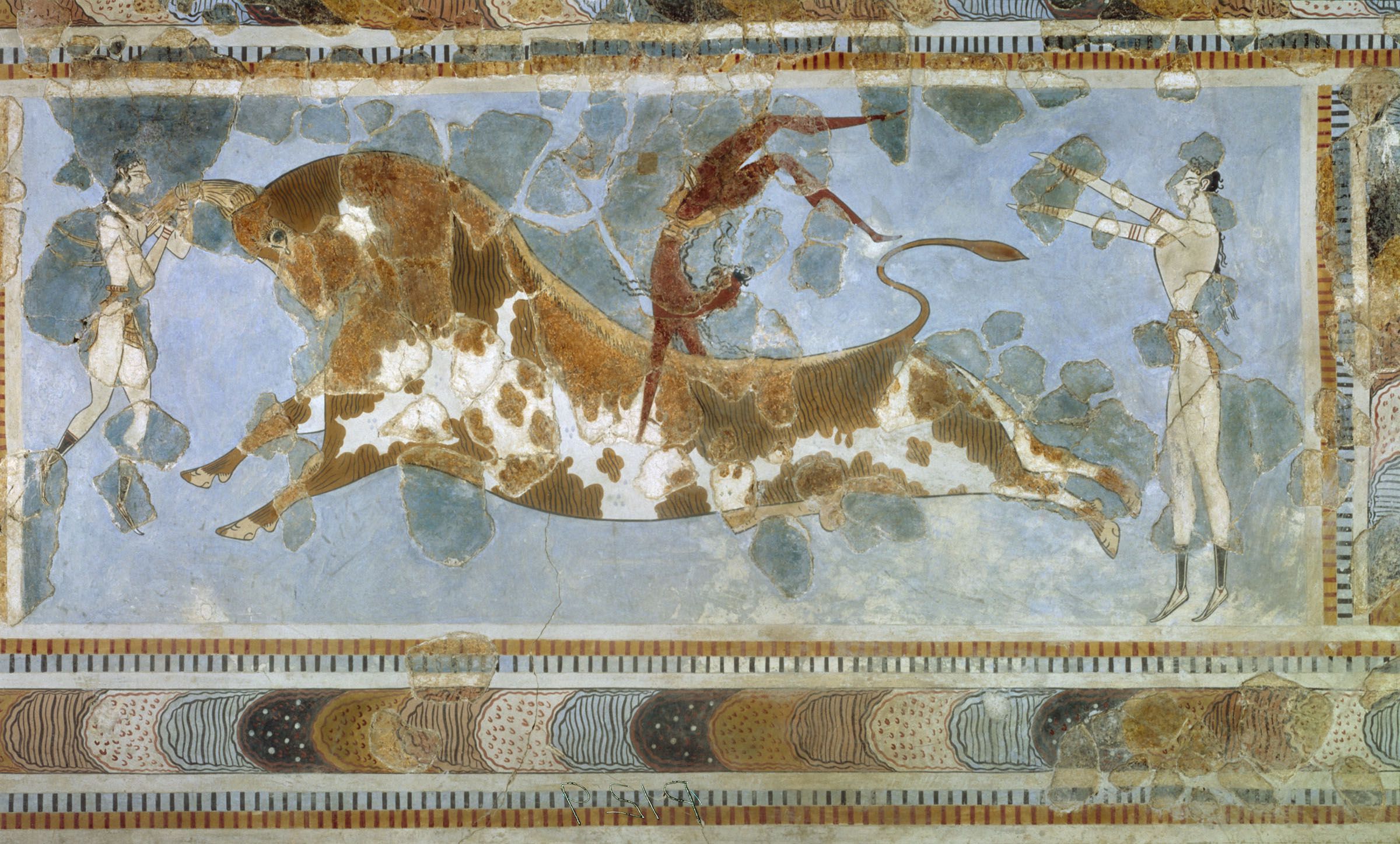The “Minoan bull leaper” is a bronze group of a bull and leaper in the British Museum. It is the only known largely complete three-dimensional sculpture depicting Minoan bull-leaping. Although bull leaping certainly took place in Crete at this time, the leap depicted is practically impossible and it has therefore been speculated that the sculpture may be an exaggerated depiction. This speculation has been backed up by the testaments of modern day bull leapers from France and Spain.
Minoan Bull-leaper by Wiz Sciencehttps://www.travelling-greece.com/minoan-bull-leaper/
Posted by Crete on Samstag, 8. Juli 2017
The group was cast in a single mould using the lost-wax casting technique. The group’s homogeneity was demonstrated by analysing the composition of the bronze of bull and leaper: both contain about 96% copper and 1.5% tin, with 1% zinc. The small amount of tin in the alloy would have made it difficult for the bronze to fill the mould, resulting in the missing lower legs of the leaper, and probably the arms. Stylistically, the group is coherent, since the arched back of the leaper mirrors the flying gallop posture of the bull.
Arthur Evans, the excavator of Knossos, first published this object in the “Journal of Hellenic Studies”.
Evans dated the bull-leaper to the Late Minoan I period, so that this object dates to approximately 1600 BC.
It was acquired by the British Museum in 1966 as part of the collection of Captain Edward George Spencer-Churchill . He acquired it in Crete in 1921. The object was widely known before its acquisition and display in the Museum. It was illustrated in several general books and exhibited at the British Academy in 1936.
https://en.wikipedia.org/wiki/Minoan_Bull-leaper












































